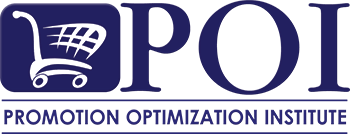Trade Promotion Management (TPM)
Best practice is to integrate an organization’s TPM with demand planning to ensure proper production. Integration is especially beneficial when promotion details/timing changes. The POI survey shows that 77% of respondents are currently using TPM systems to manage trade. Additionally, 40% respondents are embarking to deploy new TPM solutions in 2022.
Trade promotion management is an important practice as CPG companies spend between 11% and 27+% of revenues on Trade Promotions, which is often the second largest expense on the P&L, after cost of goods sold.
Source: POI 2022 State of the Industry Report
What is Trade and How is it Used to Drive the Business?
Trade Spending is:
- The money a manufacturer spends with a retailer
- Used to encourage promotion vis discount and/or support (F&D)
- Used to drive additional volume
- Working Trade
- Non-Working Trade – i.e., New Items, Sales Introductory Allowances (Distribution)
Why do we invest in trade?
- Drive incremental volume/profit via in-store support
- Merchandising – Feature, Display, (F&D), Pricing
- Secure a particular everyday price point (EDLP)
- Maintain/improve velocity
- Drive trial
- Compare with other manufacturers/Private Label
- Secure additional distribution/shelf space → “slotting”
Trade Promotion Management Capabilities Consist of:
- Planning
- Forecasting (Incremental and Baseline)
- Budgeting and ongoing tracking
- Visibility to promotion execution and in-flight monitoring
- Deduction Resolution
- Settlements
- Reconciliation
- Reporting & Analytics on all of the above (by persona)
Trade Promotion Management Benefits:
- Standardization; One Master Record
- Provides accurate and timely information to support trade promotion decision-making
- Enable planning of promotions based on analytics
- Provide actionable KPI’s to measure and analyze, helping to make better decisions to improve performance.
- Cross-functional visibility through reporting and dashboards to year-to-date, year-to-go and total year forecasts based on just in time user inputs
- Enables stronger relationships with retailers
- Increase ROI in Trade Promotions
- Cross-functional awareness and alerts to exceptions
- Automated funding and approval processes
- Monthly snap shots of the forecast (by account and total aggregated customer plans)
- Enables Right Product, in the Right Place, at the Right Time
Software solutions enable an organization to gain timely and accurate data to assist in making effective trade promotion decisions, resulting in increased sales and ROI. Trade promotion data can be analyzed in order to continually improve trade promotions and ensure the success of future trade promotion executions.
Trade Promotion Strategies include:
- Pricing techniques
- Product displays
- Deals & Discounts
- Product Sampling
- In-store Demonstrations
- Co-promotions
- Gamification
While TPM Systems are transactional in nature, they help an organization increase sales, reduce burden, manage funding, and improve operations which in turn leads to increased profits.
History of Trade Promotion Management
Trade promotion evolved as a result of default, not design. In the Nixon era, the administration enacted a price freeze to help stem inflation on retail products. Prior to the price freeze effective start date, the consumer products industry initiated a significant price increase to the inevitable escalation of material cost-of-goods during this period. A by-product of this across-the-board price-increase on consumer products as the birth of trade promotions in the CPG universe. Consumer products companies dealt back the difference of the old price and the new to keep their retail prices to the consumer the same. This strategy to get around Nixon’s price controls evolved into the trade promotion management practice.
In the early stages of trade promotion (previously referred to as Co-op Advertising), the retailer began to create retail opportunities at a nominal cost revolving around retail price reduction and in-store display. The leading-edge manufacturers of the time aggressively supported the retailer’s merchandizing opportunities and realized a significant sales lift when their products were promoted in-store. This escalation of trade promotion spending by the CPG manufacturer was a win-win scenario for both parties. Tracking these promotion expenditures at this time was relatively simple. A flat dollar rate per case was used, which built a fund around which the manufacturer and retailer planned promotion activity. The brand managers at the larger manufacturers internally tracked these accruals against their P & L, creating the first formal trade promotion management process.
In recent years, Consumer-Packaged Goods (CPG) and Fast-Moving Consumer Goods (FMCG) companies invest substantial time and money on promotions with retail partners designed to or increase/protect market share and increase revenue. When asked on the POI survey, “How would you describe the amount of time that the entire process of creating a promotional plan from budgeting to planning to execution to settlement to post event analytics in your organization,” 59% responded as “Burdensome.”
Properly executed trade promotion management enables a consistent approach to analyzing performance and cross-functional visibility to take action on the insights. Today with advancements in the industry, you will often hear POI refer to Trade Promotion as TPx so that it is inclusive of trade promotion management, trade promotion optimization, trade promotion effectiveness, trade promotion analytics, and acronyms yet to be created.
Join Now For Instant Access
If you are investigating new solutions and want to know what’s possible in the TPx and RetX space, you can review capabilities and vendor offerings in the POI TPx and Retail Execution Vendor Panoramas.

